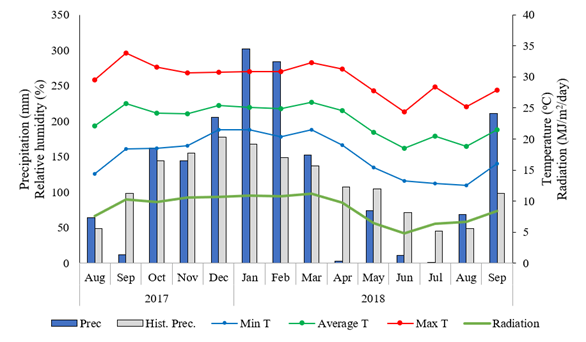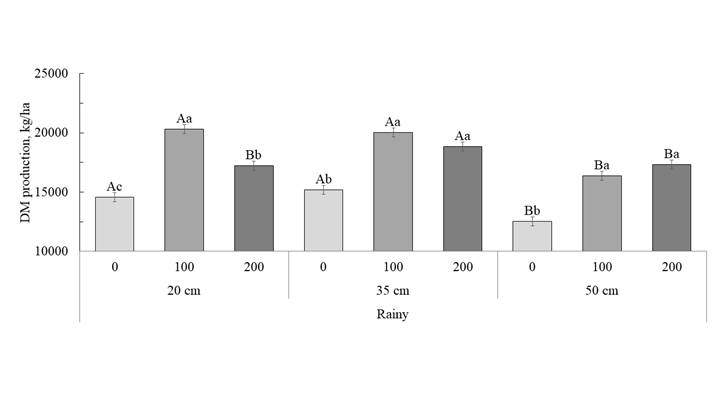ABSTRACT:
The objective was to evaluate the effect of nitrogen fertilization levels on productivity, and nutritional value of BRS Kurumi managed at different residue heights during rainy and dry periods of the year. The pasture was managed in three residue heights (20, 35, and 50 cm) and three nitrogen fertilization levels (0, 100, and 200 kg N/ha/year) during the rainy and dry seasons. When the height of the grass of each plot reached 80 cm, the Kurumi was cut manually at the pre-established residue heights. Around 89% of the dry matter (DM) production was observed during the rainy season. The residue height of 35 cm together with doses of 100 or 200 kg N/ha/year, and the residue height of 20 cm, with a dose of 100 kg N/ha/year were the treatments that had the highest DM production during the rainy period. No differences in DM production were observed between tested treatments during the dry period. The Kurumi cultivated during the dry period had the highest content of neutral detergent fiber and lowest digestibility. The Kurumi managed with residue heights of 20 and 35 cm and fertilized with 100 kg N/ha had the highest values of efficiency of utilization applied nitrogen. The use of 20 or 35 cm of residue height and 100 kg of N/ha/year is recommended to obtain greater biomass production and nutrients, nutritional quality, and nitrogen use efficiency.
Key words:
dwarf elephant grass; nitrogen fertilization; pasture structure; residue height; season

 Thumbnail
Thumbnail
 Thumbnail
Thumbnail
 Thumbnail
Thumbnail
 Thumbnail
Thumbnail



